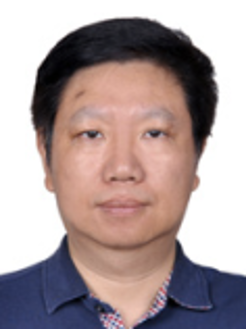High-throughput design, fabrication and in-situ characterization of optoelectronic functional materials
Rongming Wang
Beijing Advanced Innovation Center for Materials Genome Engineering, University of Science and Technology
Beijing, Beijing 100083, China
EXTENDED ABSTRACT: Controllable synthesis is the basis of materials science research. A deep understanding of the growth process on a certain characteristic scale is the cornerstone of controllable synthesis. In-situ observation of dynamic atomic migration, atomic structure, and electronic structure evolution in the nanomaterial growth process, which can provide direct experimental evidence for studying the growth mechanism and revealing the structure-activity relationship of nanomaterials, greatly improve the research efficiency of new nanomaterials, and become one of the important frontiers in the field of material science research. In-situ preparation and characterization platform at atomic resolution constructed based on the aberration-corrected environmental transmission electron microscope (ETEM) can help investigate the design, fabrication, and in-situ characterization of advanced functional materials at atomic spatial scale and millisecond time scale. Taking the optoelectronic functional materials as the main research object, we in-situ studied their surface structure, atomic configuration at the interface and the structural evolution under the external fields. The surface tensile strain of Ni-Pt nanoflowers was found using the column positioning technology with a picometer precision [1]. With the help of in-situ technique at atomic resolution, it is found that the epitaxial alignment and coalescence of Au nanoparticles on the surface of MoS2 can be accelerated by the irradiation of electron beam [2]. Combining digital dark field and spherical aberration correction technologies, we found that the coexistence of 2-3 nm sized TiO2 two-dimensional nanocrystals and amorphous TiO2, and the formation of ultra-thin TiO2-MoS2 heterostructure are critical to improve the photoelectric properties [3]. In addition, high resolution imaging, in-situ electron energy loss spectroscopy and in-situ X-ray absorption spectroscopy were combined to reveal the dynamic structure evolution process of C atoms dissolution and precipitation near the surface of Co catalyst at sub-angstrom resolution under the reaction conditions of 600-800 C [4]. It is found that the carrier SiO2 migrates and diffuses on the surface of Co catalyst and forms a SiO2 layer with ordered quartz structure. A single Si atomic layer forms at the interface between Co and SiO2 under CO, CH4 and H2 and CH4 at 750 °C. In-situ characterization also reveals the real activity of NiAu bimetallic catalyst, and expounds the application of advanced in-situ characterization method in the field of crystal catalysis research [5].
REFERENCES
[1] A.S. Shan, R.M. Wang*, and co-authors, Nano Res., 13 (11) (2020) 3088-3097
[2] Y.H. Sun, R.M. Wang*, and co-authors, Nano Res., 12 (4) (2019) 947-954
[3] B.X. Liu, R.M. Wang*, and co-authors, Nano Res., 14 (4) (2021) 982-991
[4] F. Yang, R.M. Wang*, and co-authors, CCS Chem., 3 (2021) 154
[5] R.M. Wang*, Nat. Catal., 3(4) (2020) 333-334

Rongming Wang received Ph. D. from Beijing Institute of Aeronautical Materials, China. Currently, he is a professor in University of Science and Technology Beijing. His research interests include Magneto-Photoelectrical nanomaterial, transmission electron microscopy, interface science, and materials genome engineering. He has published over 200 articles, which has been cited over 10,000 times and the citation H factor is 53.